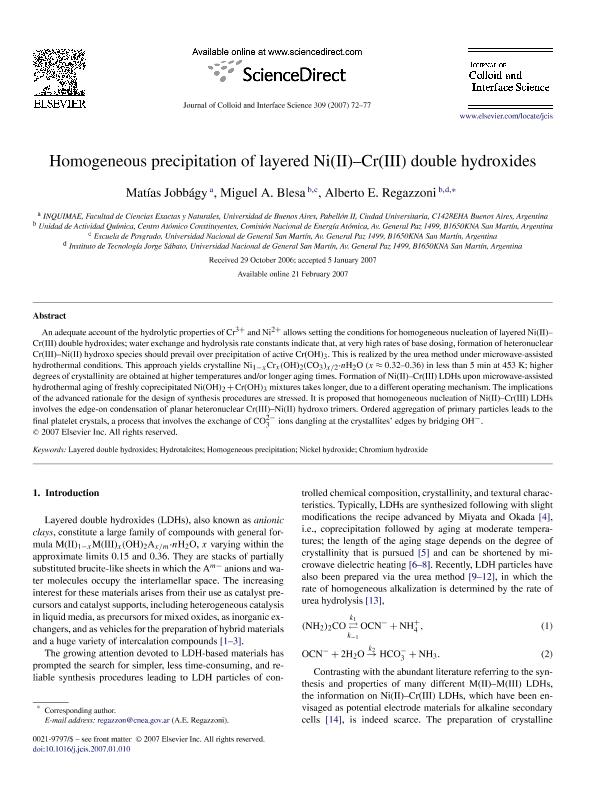Artículo
Homogeneous precipitation of layered Ni(II)–Cr(III) double hydroxides
Fecha de publicación:
05/2007
Editorial:
Academic Press Inc Elsevier Science
Revista:
Journal of Colloid and Interface Science
ISSN:
0021-9797
Idioma:
Inglés
Tipo de recurso:
Artículo publicado
Clasificación temática:
Resumen
An adequate account of the hydrolytic properties of Cr3+ and Ni2+ allows setting the conditions for homogeneous nucleation of layered Ni(II)–Cr(III) double hydroxides; water exchange and hydrolysis rate constants indicate that, at very high rates of base dosing, formation of heteronuclear Cr(III)–Ni(II) hydroxo species should prevail over precipitation of active Cr(OH)3. This is realized by the urea method under microwave-assisted hydrothermal conditions. This approach yields crystalline Ni1−xCrx(OH)2(CO3)x/2·nH2O (x ≈ 0.32–0.36) in less than 5 min at 453 K; higher degrees of crystallinity are obtained at higher temperatures and/or longer aging times. Formation of Ni(II)–Cr(III) LDHs upon microwave-assisted hydrothermal aging of freshly coprecipitated Ni(OH)2+Cr(OH)3 mixtures takes longer, due to a different operating mechanism. The implications of the advanced rationale for the design of synthesis procedures are stressed. It is proposed that homogeneous nucleation of Ni(II)–Cr(III) LDHs involves the edge-on condensation of planar heteronuclear Cr(III)–Ni(II) hydroxo trimers. Ordered aggregation of primary particles leads to the final platelet crystals, a process that involves the exchange of CO32− ions dangling at the crystallites’ edges by bridging OH−.
Archivos asociados
Licencia
Identificadores
Colecciones
Articulos(INQUIMAE)
Articulos de INST.D/QUIM FIS D/L MATERIALES MEDIOAMB Y ENERGIA
Articulos de INST.D/QUIM FIS D/L MATERIALES MEDIOAMB Y ENERGIA
Articulos(SEDE CENTRAL)
Articulos de SEDE CENTRAL
Articulos de SEDE CENTRAL
Citación
Jobbagy, Matias; Blesa, Miguel Angel; Regazzoni, Alberto Ernesto; Homogeneous precipitation of layered Ni(II)–Cr(III) double hydroxides; Academic Press Inc Elsevier Science; Journal of Colloid and Interface Science; 309; 1; 5-2007; 72-77
Compartir
Altmétricas




